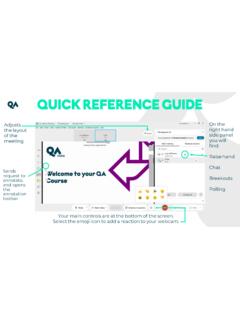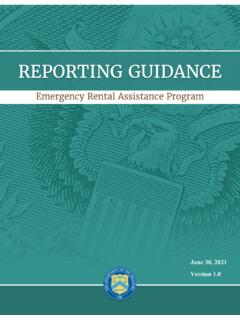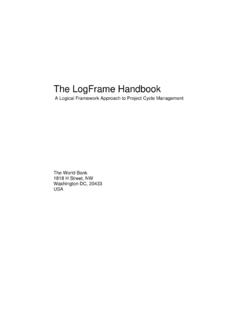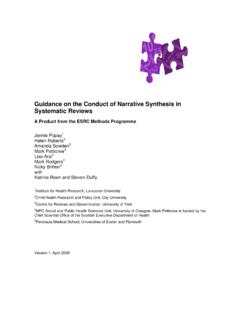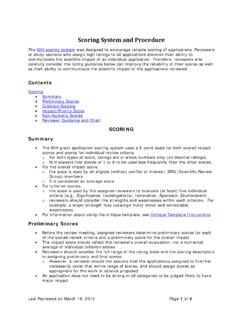Transcription of The APM Project Management Qualification Delegate ... - QA
1 APMP-6 APM Project Management QualificationDelegate Workbook 1(Course Text, Pre-course Exercises and Exam Tips)APMP Project Management Delegate Workbook 1 APMP-6 Text StructureThis manual provides a narrative text to be used in conjunction with the course slides that are provided separately. The text provides additional information and raises points that will be expanded upon during your course. In effect, this material is the course manual , which can be used as a reference 2 of your manual has a number of short answer questions to help check your understanding as well as a number of exercises for you to attempt before attending thecourse. Later sections of the classroom material will provide exercises that will be covered during your training course as well as during your private evening APMP syllabus is based on the APM Body of Knowledge (BoK) Version 6. However, the syllabus does not follow the BoK order but, instead, allocates BoK topics into logical learning groups as set out in the APMP Syllabus.
2 The topic order follows the APMP Syllabus structure in order to facilitate cross-reference. The APM BoK v6 topic references are included in the event that you want to cross-reference the learning material with the APM BoK v6. The BoK is not provided with the learning materials as it is not APMP Project Management Delegate Workbook 1 APMP-6 1. Structure of Organisations and 4 Organisation (APM BoK ) .. 5 Project Sponsorship (APM BoK ).. 15 Infrastructure ( Project Office) (APM BoK ) .. 192. Project Life 22 Life Cycle (APM BoK ).. 233. Project contexts and environments .. 30 Environment (APM BoK ) .. 31 Operations Management (APM BoK ) .. 35 Programme Management (APM BoK ) .. 38 Portfolio Management (APM BoK ).. 434. Governance and structured 48 Project Management (APM BoK ).. 49 Project Management 54 Governance (APM BoK ) .. 575. 61 Communication (APM BoK ).
3 62 Conflict Management (APM BoK ) .. 67 Negotiation (APM BoK ) .. 746. Leadership and 79 Leadership (APM BoK ).. 80 Teamwork (APM BoK ).. 907. Planning for Success .. 98 Business Case (APM BoK ).. 99 Benefits Management (APM BoK ) .. 101 Success factors and maturity (APM BoK ) .. 105 Investment Appraisal (APM BoK ) .. 110 Information Management (APM BoK ) .. 114 Planning (APM BoK ).. 119 Estimating ..123 Stakeholder Management (APM BoK ) .. 127 Law (APM BoK ).. 131 Health and Safety (APM BoK ) .. 1348. Scope 140 Scope Management (APM BoK ).. 141 Requirements Management (APM BoK ).. 1472 APMP Project Management Delegate Workbook 1 APMP-6 Management (APM BoK )..151 Change Control (APM BoK ).. 1539. Schedule and Resource 159 Time Scheduling (APM BoK ) .. 160 Resource Management (APM BoK ).. 173 Resource Scheduling (APM BoK ).. 174 Budgeting and Cost Control (APM BoK ).
4 178 Control (APM BoK ) .. 185 Earned Value 18910. Project contexts and 197 Contract (APM BoK ) .. 198 Procurement (APM BoK ) .. 201 Provider Selection and Management (APM BoK )..20711. Project Risk Management and Issue 210 Risk context (APM BoK ) .. 211 Project Risk Management (APM BoK ) .. 212 Risk techniques (APM BoK ) .. 219 Delegation (APM BoK ) .. 22412. Project Quality Management .. 226 Project Quality Management (APM BoK )..227 Reviews (APM BoK ) .. 236 Course Content and APM BoK Topics Cross-reference: .. 241 Course Content Alphabetical Listing:.. 243 3 APMP Project Management Delegate Workbook 1 APMP-6 Structure of Organisations and ProjectsCoverage of Learning Outcomes: Distinguish between different types of organisational structure Responsibility Assignment Matrix Roles and responsibilities of Project sponsor, Project manager, team members, Project steering group, users Relationship between Project sponsor and manager Functions and benefits of a Project APMP Project Management Delegate Workbook 1 APMP-6 (APM BoK ) Organisation is the Management structure applicable to the Project , programme or portfolio and the organisational environment in which it operates.
5 APM BoK are heavily influenced by the context within they are being executed and one of the primary elements of the Project context is the organisation structure that has been adopted by the business. The chosen structure will have a significant impact on the Management and reporting mechanisms for individual organisation structure of a Project will typically have four layersExternal: representing the host or client organisation for the work. Requirements are defined and funding is provided by this : provides a link between the Management and external levels. The Project sponsor has accountability for the overall success of the Project and achievement of : day to day responsibility for the Management of the : those who create the these four levels are assurance and administrative support. Assurance provides confidence that the Management and delivery of the work are being conducted effectively and appropriately.
6 Administrative support provides services to the Management and delivery levels of an administrative and/or technical Project , programme or portfolio organisations may be supported by a permanent governance infrastructure that owns P3 Management . This is usually referred to as an enterprise Project Management office (EPMO).Organisational continuum Depending upon the nature of the Project and the organisation s principal business, there are significant implications for how projects are structured, staffed and are three basic types of organisation structure within which projects are delivered: Functional , Matrix and Project . They could be considered as a continuum where the relative authority between the Project manager and the functional manager shifts. This is represented in the Organisational Continuum .5 APMP Project Management Delegate Workbook 1 APMP-6 side of the organisational continuum indicates that in a functional organisation, the functional manager has full authority.
7 In other words, the functional manager has control over everything that takes place within that department. Work is typicallyexclusively related to routine operations. The level of change is minimal as is the level of Project activity. The other side of the continuum indicates that, in a Project (or task force) organisation,the Project manager has full authority. The Project manager has control over everything that happens in the Project . Routine operations do not exist (or are confined to support functions) projects represent the majority of business activity. The Project manager has responsibility for staff well-being and these two extremes are versions of matrix organisations combinations of functional and Project a Project progresses through its different phases there may be a change in the type of organisation applied to the Project . This may revolve primarily around the size of the team needed to complete each of the various Project phases.
8 Organisation TypesFunctionalMatrixProjectTraditional departments headed by functional managers. All departmental staff report to that manager. Any projects that are required are co-ordinated Provides a balance of authority between the department head(s) and the Project manager(s).Projects are resourced by drawing full or part time staff from departments. Staff members work in dedicated full time Project teams which are commensurate to the size of the Project . The Project manager has full authority. 6 APMP Project Management Delegate Workbook 1 APMP-6 a senior level Project Management approach is immature and confidence in running projects is limited. All experience is associated with routine operations and optimisation of process and customers see no single Project may be co-located. Good for organisations that undertake manyprojects and routine managers have authority for the Project .
9 Department managers have authority for the welfare of staff and the efficiency of the department. Project managers may be located within departments or in a Project type of organisation is common for very large projects or organisations whose primary business is Project -related ( consultancies). Types of Matrix StructureWeak MatrixAs functional organisations undertake more projects, and experience and confidence builds, authority can be delegated downwards. This often leads to the appointment of a Project co-ordinator within a department. However, authority remains weak from a Project MatrixThe business of many organisations is likely to be a mixture of projects and business-as-usual. The balanced matrix recognises the need for a dedicated Project manager but falls some way short of delegating full authority for the Project to this MatrixAs projects increasingly contribute to the revenue stream of the organisation, more resources can be invested in Project teams.
10 This is often reflected in the setting up of a projects department or Project office. The projects department is responsible for providing full / part time Project managers for projects. Team members continue to be drawn from departments. There is a much stronger emphasis on projects. The Case for the MatrixAs many organisations undertake projects and operational work, the matrix may be the only feasible organisation structure. It combines the advantages of the functional and the Project organisation but introduces complexity and the potential for conflict. a formal, two-dimensional solution to a two-dimensional problem - reflects reality7 APMP Project Management Delegate Workbook 1 APMP-6 improved Management of projects where task force structures are inappropriate preserves the benefits of a functional structure economical use of expensive resources retains an element of job security good for organisations that routinely carry out projectsRequirements for SuccessKey aspects that must be treated proactively to make a matrix work include.
